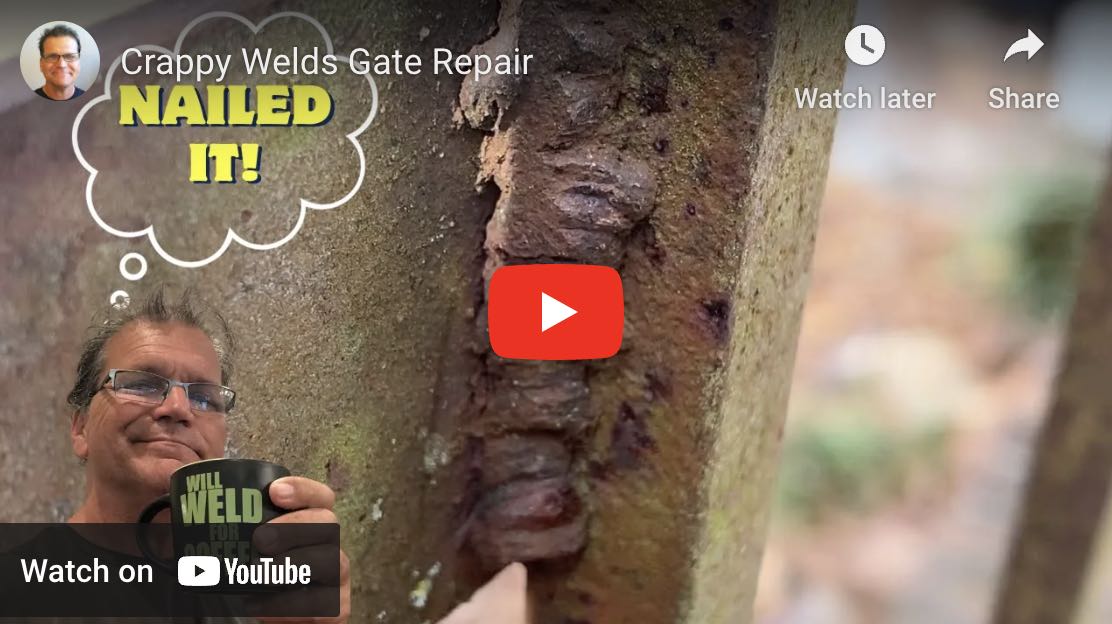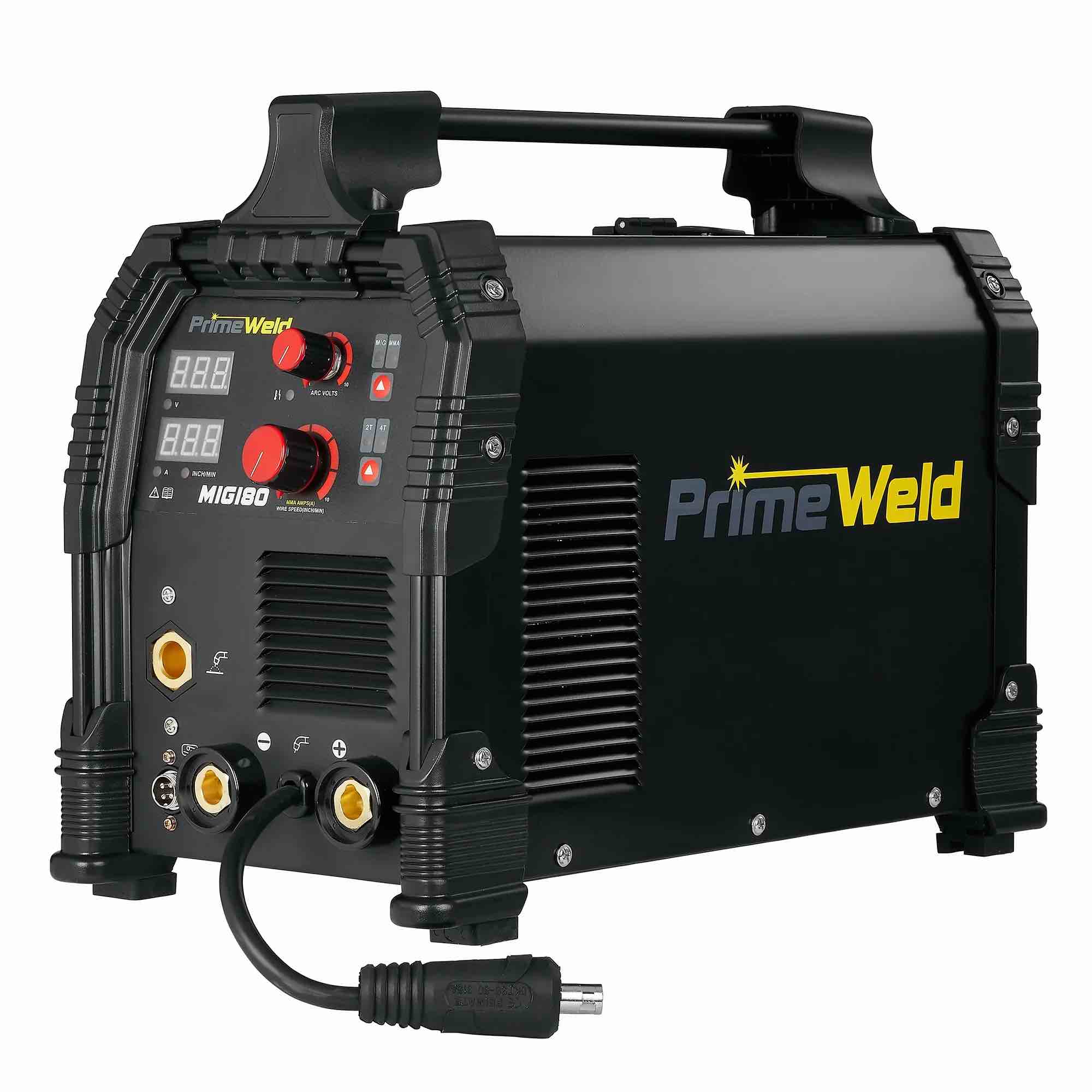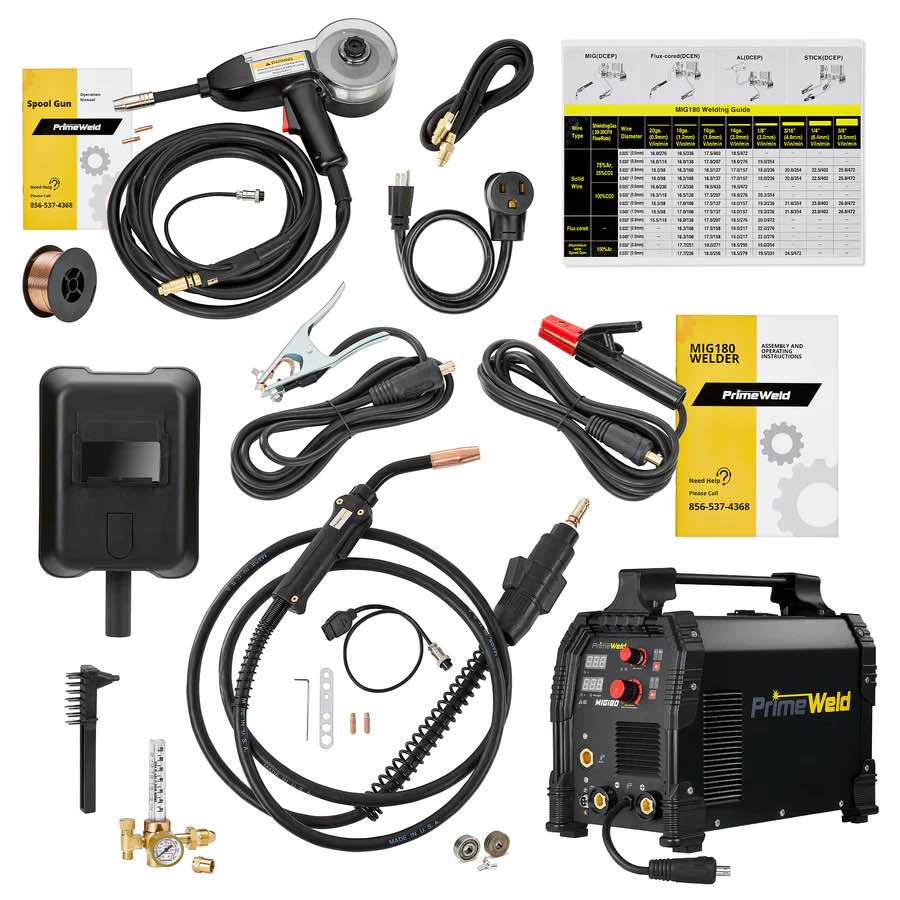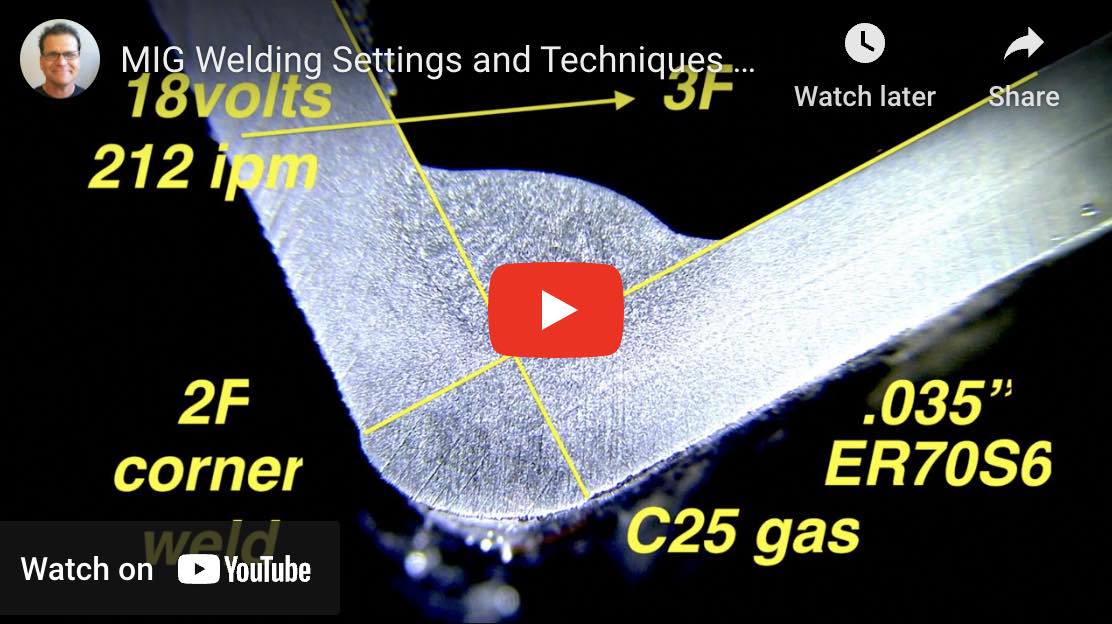Wire feed vs Stick Welding
If you are looking for the Pros and Cons of wire feed vs stick welding, this page is for you.
- HOME
- STICK WELDING
- Wire Feed Vs Stick Welding
I think of my Mig180 mostly as a Great Little MIG Welder with a great arc and nice small mig gun that feels great in my hand... but it also Stick welds, and even comes with a spool gun for aluminum.
just look at all that comes with it... That is a lot of bang for the buck!
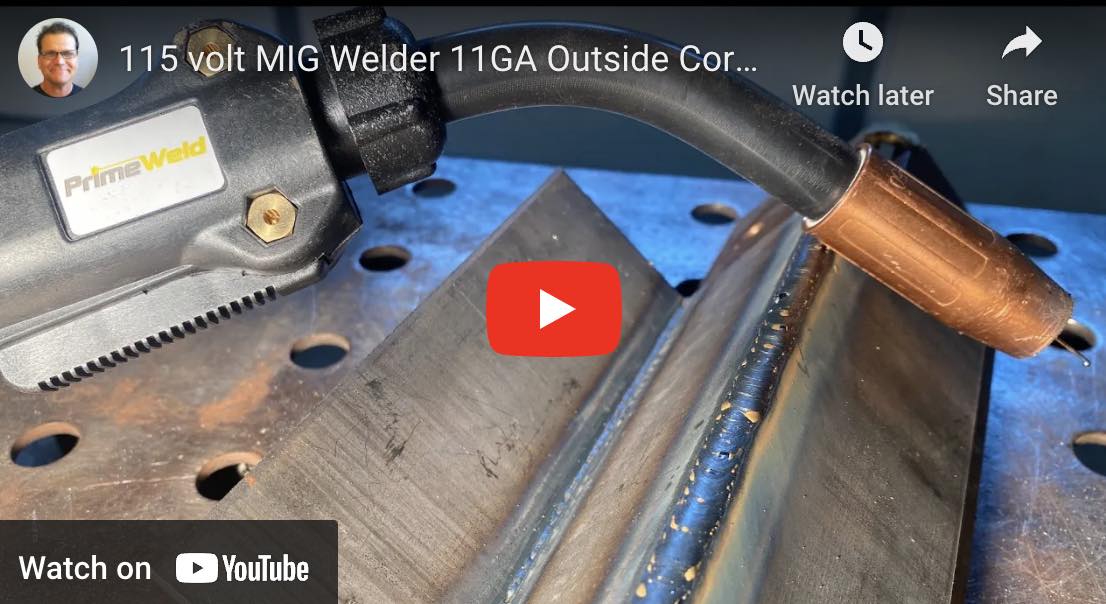
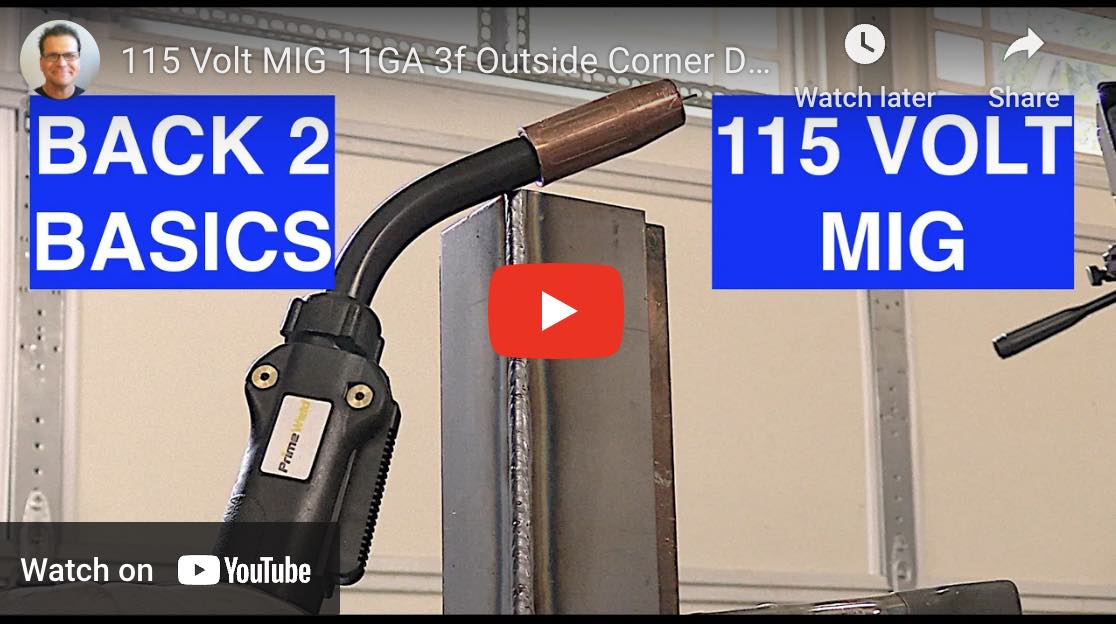
Pros and Cons of Stick Welding
Wire Feed Welding vs Stick Welding: Pros and Cons
In the world of welding, both wire feed welding (often referred to as MIG welding) and stick welding (also known as shielded metal arc welding or SMAW) are 2 of the most popular and versatile types of welding.
Each has distinct advantages and limitations that make them suited for specific applications, materials, and conditions. Below, we provide a comprehensive overview to help you decide which welding method is best suited to your needs, whether you’re working in a professional setting or tackling home projects.Understanding Wire Feed Welding
Wire feed welding, or MIG (Metal Inert Gas) welding, is an arc welding process where a continuous wire electrode is fed through a welding gun, creating an arc with the base metal. It’s known for its speed and efficiency and is particularly favored in production settings.
Advantages of Wire Feed Welding
- Ease of Use
MIG welding is often considered more beginner-friendly than stick welding. The automated wire feed system allows for a more consistent arc, reducing the need for constant manual adjustment and providing greater control over the welding process. - High Efficiency and Speed
With a continuous feed of electrode wire, MIG welding offers faster weld times than stick welding. This makes it ideal for jobs that require high productivity, especially for manufacturing and fabrication. - Clean Welding Process
Since MIG welding uses a shielding gas, there is minimal slag produced, which translates to reduced cleanup time. This makes it an attractive option for projects that demand clean and precise welds. - Versatile Material Compatibility
MIG welding is effective on a wide range of materials, including carbon steel, stainless steel, and aluminum. By changing the type of shielding gas and filler material, operators can weld different materials effectively, making it suitable for varied industrial applications.
Disadvantages of Wire Feed Welding
- Equipment Cost
MIG welding equipment is generally more expensive than stick welding setups, especially when including the necessary gas tanks, regulators, and consumables. This can make it a significant upfront investment. - Susceptible to Drafts
MIG welding requires a shielding gas, which can be disrupted by wind or drafts. This makes it challenging to use in outdoor environments unless extra precautions are taken to shield the work area. - Requires Cleaner Metal Surfaces than stick welding.
For optimal welds, the metal surface must be free of rust, paint, or other contaminants. Any impurities can compromise the weld’s integrity, limiting MIG welding’s utility in certain applications.
Exploring Stick Welding
Stick welding, or SMAW, is a manual arc welding process that uses a consumable stick electrode covered with flux. This flux provides a shielding layer that protects the molten weld pool from atmospheric contamination.
Advantages of Stick Welding
- Portability
Stick welding equipment is typically compact and easy to transport, requiring only a power source and electrode. This makes it ideal for remote work sites and field repairs, especially in outdoor settings. - Suitable for Outdoor and Adverse Conditions
Since stick welding doesn’t require a shielding gas, it performs well in windy or drafty conditions where MIG welding may struggle. This makes it the go-to choice for outdoor structural welding and repairs. - Effective on Rusty or Dirty Metal
The flux coating on stick electrodes helps to disolve coatings or oxides like mill scale on the metal as it welds, allowing it to work on surfaces with minor rust or paint. This is advantageous when working on older or less-maintained equipment and infrastructure. - Cost-Effective
Stick welding machines and electrodes are relatively inexpensive compared to MIG setups, which can be advantageous for smaller operations or DIY enthusiasts with limited budgets.
Disadvantages of Stick Welding
- Higher Skill Requirement
Stick welding demands greater control and skill, as the welder needs to maintain the correct arc length, angle, and electrode movement. This can make it challenging for beginners to achieve consistent results. - Slower Process
Unlike the continuous feed of MIG welding, stick welding requires the welder to replace electrodes frequently, which slows down the welding process. This makes it less efficient for high-volume production work. - Increased Cleanup
The flux coating generates slag, which must be chipped off after each pass. This additional cleanup step can be time-consuming, especially when working on larger projects that require multiple passes.
Which Welding Method Is Right for You?
Choosing between wire feed and stick welding depends on factors such as the welding environment, type of project, and level of expertise required.
Wire feed welding may be the better choice for indoor, high-efficiency applications where clean metal is available and ease of use is important.
Stick welding, on the other hand, excels in outdoor and on-site repairs where portability, tolerance of dirty metals, and cost-effectiveness are key priorities.
For professional welders, mastering both methods can expand your capabilities and allow you to tackle a wider range of projects. However, by carefully assessing the specific requirements of your welding project, you can select the method that will deliver the best results with the least amount of effort and expense.


